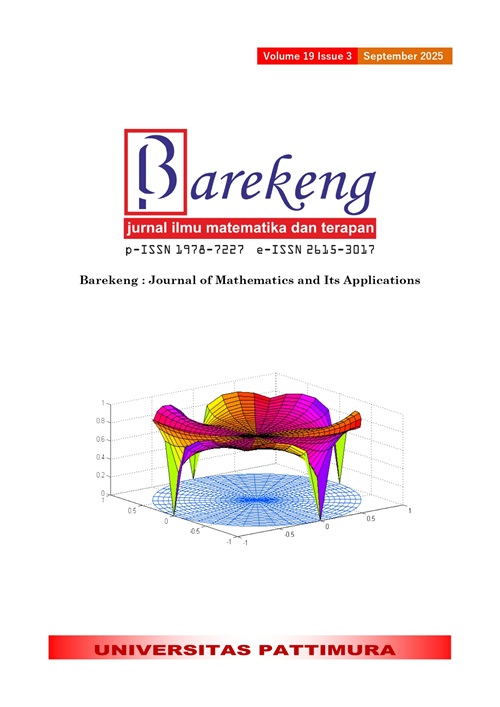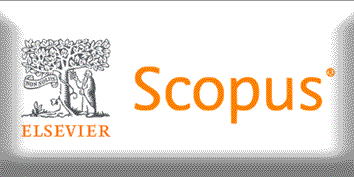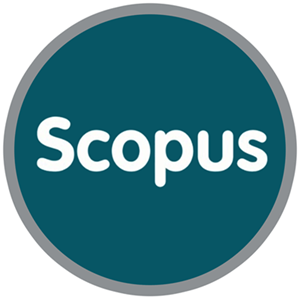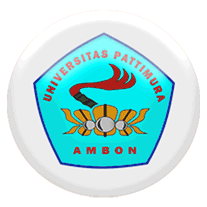ANALYSIS OF THE RELATIONSHIP BETWEEN WATER QUALITY AWARENESS AND DRINKING WATER CONSUMPTION BEHAVIOR (CASE STUDY: MAJENE CITY AND CAMPALAGIAN VILLAGE, WEST SULAWESI)
Abstract
The declining quality of drinking water sources due to contamination poses significant health risks, particularly in rural areas where public awareness about water quality and its impact on health is often limited. In Majene City and Campalagian Village, West Sulawesi, drinking water is predominantly sourced from wells and springs, but these sources have shown elevated levels of pollutants, such as manganese and coliforms, exceeding government standards. This study explores the relationship between water quality awareness and drinking water consumption behavior in these regions using Structural Equation Modeling-Partial Least Squares (SEM-PLS). Data were collected through household surveys and laboratory testing of water samples, focusing on physical, chemical, and biological parameters. SEM-PLS was employed for its ability to analyze latent variables and handle small sample sizes effectively. Results reveal that water quality awareness explains 78.6% of the variance in drinking water consumption behavior (R² = 0.786), with key indicators such as knowledge of water quality standards and contamination risks strongly predicting positive behavioral changes. Hypothesis testing confirmed a significant positive relationship (path coefficient = 0.887, p < 0.001), underscoring the importance of awareness in promoting healthy consumption behaviors. These findings highlight the need for targeted public education campaigns and policy interventions to improve water quality awareness and consumption practices. The study also contributes to the growing application of SEM-PLS in environmental and public health research, offering insights into the complex interplay between awareness and behavior. Future research should consider integrating socio-economic and cultural factors to develop a more holistic understanding of drinking water consumption patterns.
Downloads
References
K. Syuhada, “MANFAAT MINUM AIR BAGI TUBUH KITA,” DJKN, 28 Juni 2022, [Online]. Available: https://www.djkn.kemenkeu.go.id/kanwil-jateng/baca-artikel/15163/Manfaat-Minum-Air-Bagi-Tubuh-Kita.html [Accessed: 25 December 2024].
D. Benton, K. T. Jenkins, H. T. Watkins, and H. A. Young, “MINOR DEGREE OF HYPOHYDRATION ADVERSELY INFLUENCES COGNITION: A MEDIATOR ANALYSIS,” American Journal of Clinical Nutrition, vol. 104, no. 3, pp. 603–612, Sep. 2016, doi: https://doi.org/10.3945/ajcn.116.132605.
D. M. Hartono, “SUMBER AIR BAKU UNTUK AIR MINUM,” Research and community engagement faculty of engineering universitas Indonesia, 27 Desember 2016, [Online]. Available: https://research.eng.ui.ac.id/news/read/47/sumber-air-baku-untuk-air-minum [Accessed: 10 December 2024].
DLHK Polewali Mandar, “LAPORAN AKUNTABILITAS KINERJA INSTANSI PEMERINTAH,” Polewali Mandar: DLHK, 2022.
Yusman, Habibi dan Apriansah, “PEMETAAN KUALITAS AIR TANAH WILAYAH PESISIR KABUPATEN MAJENE,” 2019.doi: https://doi.org/10.62012/sensistek.v2i1.13276
A. Nurdin, Yusman and A.I. Saudi, “ANALISIS POTENSI SUMBER MATA AIR SEBAGAI PEMENUHAN KEBUTUHAN AIR BERSIH DI KABUPATEN MAJENE,” Jurnal Teknologi Terpadu, vol. 10, no. 2, pp. 117-126, October 2022.doi: https://doi.org/10.32487/jtt.v10i2.1538
N. Urbach and F. Ahlemann, “STRUCTURAL EQUATION MODELING IN INFORMATION SYSTEMS RESEARCH USING PARTIAL LEAST SQUARES,” Journal of Information Technology Theory and Application, vol. 11, no. 2, pp. 5-40, June 2010.
Eliani, Rais, and Fadjryani, “GROUPING ANALYSIS OF MATERNAL AND CHILD HEALTH DEGREE IN INDONESIA, USING STRUCTURAL EQUATION MODELING PARTIAL LEAST SQUARE-PREDICTION ORIENTED SEGMENTATION (SEM PLS-POS),” Jurnal Matematika, Statistika dan Komputasi, vol. 19, no. 3, pp. 473–483, May 2023, doi: https://doi.org/10.20956/j.v19i3.22060.
M. Nusrang, M. Fahmuddin, and H. Hafid, “PROSIDING SEMINAR NASIONAL PENERAPAN METODE STRUCTURAL EQUATION MODELLING-PARTIAL LEAST SQUARES (SEM-PLS) DALAM MENGEVALUASI FAKTOR-FAKTOR YANG MEMPENGARUHI PDRB DI INDONESIA”, Prosiding Seminar Nasional Dies Natalis ke-62, pp. 543-548, 30 June, 2010.
E. D. Anggita, A. Hoyyi, and A. Rusgiyono, “ANALISIS STRUCTURAL EQUATION MODELLING PENDEKATAN PARTIAL LEAST SQUARE DAN PENGELOMPOKAN DENGAN FINITE MIXTURE PLS (FIMIX-PLS) (Studi Kasus: Kemiskinan Rumah Tangga di Indonesia 2017),” Jurnal Gaussian, vol. 8, no. 1, pp. 35–45, 2019.doi: https://doi.org/10.14710/j.gauss.v8i1.26620
H. Sofyan, R. Inayati, F. Harva, I. Afriyan, and Y. Yolanda, “APPLICATION OF THE STRUCTURAL EQUATION MODELING-PARTIAL LEAST SQUARE METHOD TO ANALYZE FACTORS AFFECTING THE QUALITY OF LIFE OF HYPERTENSION PATIENTS,” IOP Conference Series: Earth and Environmental Science, pp. 1-11, 2024. doi: https://doi.org/10.1088/1755-1315/1356/1/012105.
M. A. Fauzi, “PARTIAL LEAST SQUARE STRUCTURAL EQUATION MODELLING (PLSSEM) IN KNOWLEDGE MANAGEMENT STUDIES: KNOWLEDGE SHARING IN VIRTUAL COMMUNITIES,” Knowledge Management and E-Learning, vol. 14, no. 1, pp. 103–124, March 2022, doi: https://doi.org/10.34105/j.kmel.2022.14.007.
M. KANTE, C. Chepken, and R. Oboko, “PARTIAL LEAST SQUARE STRUCTURAL EQUATION MODELLINGÂ’ USE IN INFORMATION SYSTEMS,” Kabarak Journal of Research & Innovation, vol. 6, no. 1, pp. 49–67, Mar. 2018, doi: https://doi.org/10.58216/kjri.v6i1.125.
J.F. Hair Jr., G.T.M. Hult, C.M. Ringle, M. Sarstedt, N.P. Danks, and S. Ray, PARTIAL LEAST SQUARE STRUCTURAL EQUATION MODELING (PLS-SEM) USING R: A WORKBOOK, Springer Cham,2021, doi: https://doi.org/10.1007/978-3-030-80519-7.
J. Hair and A. Alamer, “PARTIAL LEAST SQUARES STRUCTURAL EQUATION MODELING (PLS-SEM) IN SECOND LANGUAGE AND EDUCATION RESEARCH: GUIDELINES USING AN APPLIED EXAMPLE,” Research Methods in Applied Linguistics, vol. 1, no. 3, December 2022, doi: https://doi.org/10.1016/j.rmal.2022.100027.
S. Nurhalizah, G. Kholijah, and Z. Gusmanely, “ANALISIS STRUCTURAL EQUATION MODELING PARTIAL LEAST SQUARE PADA KINERJA PEGAWAI PT. BANK PEMBANGUNAN DAERAH JAMBI,” Indonesian Journal of Applied Statistics, vol. 6, no. 2, p. 125, April 2024, doi: https://doi.org/10.13057/ijas.v6i2.78921.
J. Riou, H. Guyon, and B. Falissard, “AN INTRODUCTION TO THE PARTIAL LEAST SQUARES APPROACH TO STRUCTURAL EQUATION MODELLING: A METHOD FOR EXPLORATORY PSYCHIATRIC RESEARCH,” Int J Methods Psychiatr Res, vol. 25, no. 3, pp. 220–231, September 2016, doi: https://doi.org/10.1002/mpr.1497.
W. Kusuma, R. N. S. Setiawan, K. Verma, and C. F. Utomo, “STRUCTURAL EQUATION MODELING-PARTIAL LEAST SQUARE FOR POVERTY MODELING IN PAPUA PROVINCE,” Jurnal Varian, vol. 4, no. 2, pp. 79–90, April 2021, doi: https://doi.org/10.30812/varian.v4i2.852.
E.U.N Sholiha and M. Salamah, “STRUCTURAL EQUATION MODELLING-PARTIAL LEAST SQUARE UNTUK PEMODELAN DERAJAT KESEHATAN KABUPATEN/KOTA DI JAWA TIMUR (STUDI KAUS DATA INDEKS PEMBANGUNAN KESEHATAN MASYARAKAT JAWA TIMUR 2013),” Jurnal Sains dan Seni ITS, vol. 4, no. 2, pp. 169-174, 2015.
D.R Rahadi, Pengantar Partial Least Square Structural Equation Modelling (PLS-SEM). Tasikmalaya: Lentera Ilmu Madani, 2023.
WHO and UNICEF, Progress on safe drinking water, sanitation and hygiene: 2022 update. Geneva: WHO and UNICEF, 2022.
Copyright (c) 2025 Musafira Musafira, Nur Hilal A. Syahrir, Putri Indi Rahayu

This work is licensed under a Creative Commons Attribution-ShareAlike 4.0 International License.
Authors who publish with this Journal agree to the following terms:
- Author retain copyright and grant the journal right of first publication with the work simultaneously licensed under a creative commons attribution license that allow others to share the work within an acknowledgement of the work’s authorship and initial publication of this journal.
- Authors are able to enter into separate, additional contractual arrangement for the non-exclusive distribution of the journal’s published version of the work (e.g. acknowledgement of its initial publication in this journal).
- Authors are permitted and encouraged to post their work online (e.g. in institutional repositories or on their websites) prior to and during the submission process, as it can lead to productive exchanges, as well as earlier and greater citation of published works.






1.gif)



